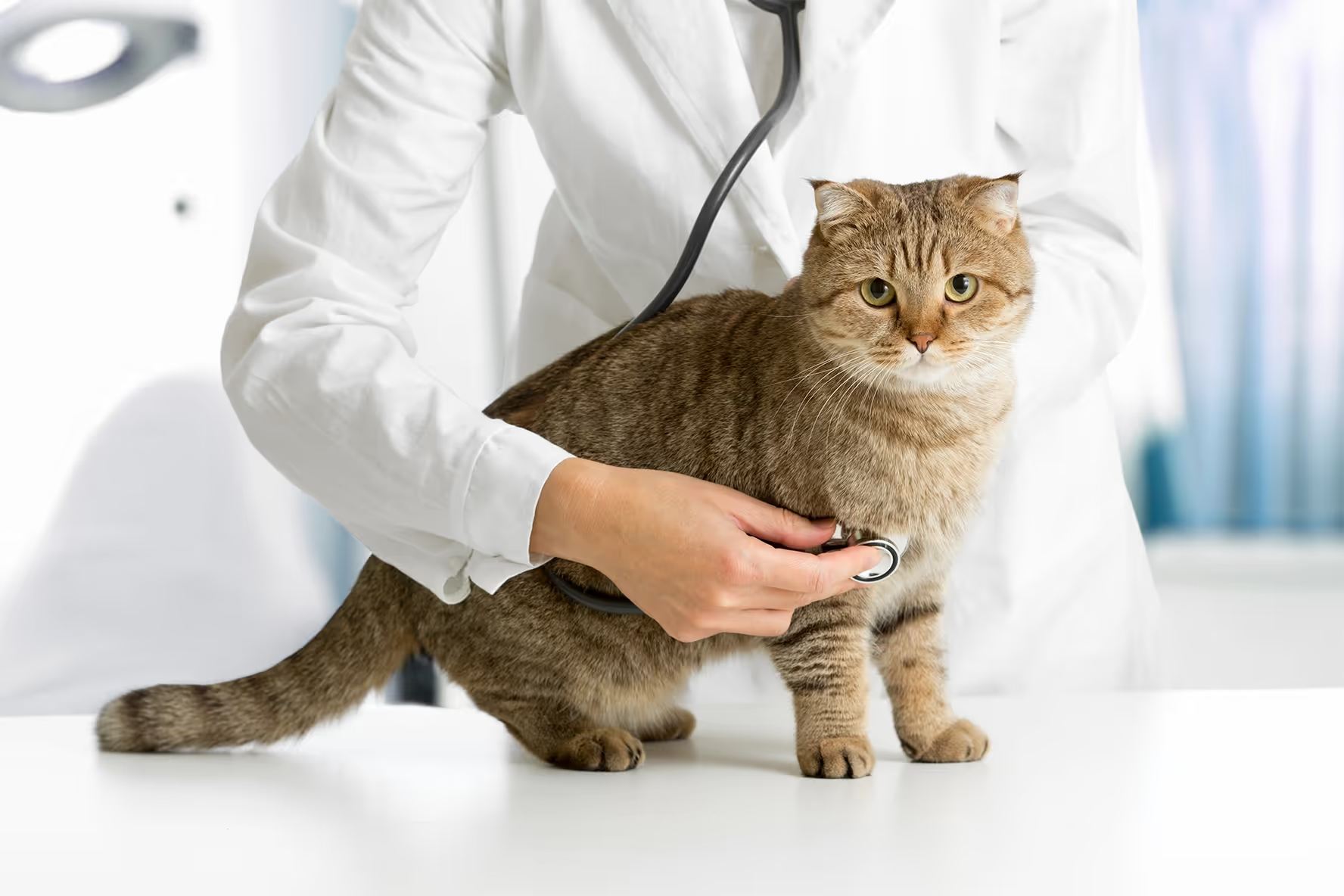
Having a sick pet is easily one of the worst experiences a pet parent can have. They can’t tell us what they’re feeling; we can’t help them as well as we would like to; they’re miserable and all we want is to bring them the joy that they bring us.
It’s worse when you aren’t quite sure what’s going on with them. Maybe they ate something out of the garbage that they weren’t supposed to. Maybe they rolled around in a stranger’s yard who might have had something on the lawn. Maybe... something really bad is going on. Maybe they are developing a cancer like Lymphoma.
Sometimes the last one can be an overreaction, but there have been many times that a pup parent went through the pain of discovering too late that their pet had been giving them signs of a much deeper problem.
If you are suspecting lymphoma, here are a few symptoms to look out for in each of the different kinds.
(The symptoms of lymphoma differ based on the different kinds of lymphoma. Each affects the body in different places and creates different reactions. If you are curious to learn more about the different types of lymphoma, check out our article explaining the differences here.)
Multicentric
The most common form of lymphoma is also sometimes the easiest to spot. There are some very noticeable physical changes to the body when a dog has multicentric lymphoma.
One of the most common physical symptoms of Multicentric Lymphoma is swollen or enlarged lymph nodes. These feel like hard rubber-like lumps under your dog’s skin¹—something that would trigger most owners to head to the vet pretty quickly. These lumps do not typically cause your pet any pain, though they can become pretty uncomfortable, swelling anywhere from 3 to 10 times the node's normal size.²
You can find lymph nodes on your dog in these 5 easy-to-check places: neck, chest, armpits, groin, and behind the knees.³

There are also behavioral tells that your pet may be developing Multicentric Lymphoma. You may notice that they have started drinking a lot more water than they had previously. Their urinary habits may also change, resulting in either more frequent urination or simply an increase in how much they pee each time you take them outside. That combo could be a sign that something is going on inside of them. Typically, dogs with Lymphoma will also see a loss of appetite and experience a lot of lethargy.⁴⁵
If your normally food-motivated, excitable dog loses those traits, go see your vet, just in case.
Alimentary
Like Multicentric Lymphoma, Alimentary Lymphoma does not usually cause the dog any pain, outside of the discomfort from, and overall draining experience, of being sick.
Alimentary Lymphoma can develop at any part of the dog's gastrointestinal tract. This means that stomach problems are usually a symptom. Dogs diagnosed with Alimentary lymphoma will have vomiting or diarrhea as their main symptoms. Whether they experience more of one symptom or the other depends on which part of the gastrointestinal tract is affected.
And like with Multicentric, dogs with Alimentary Lymphoma also experience a loss of appetite and lethargy. Alimentary Lymphoma may also cause your dog to lose weight.⁵ Loss of appetite and a diarrhea problem is an awful combo.
Most pet parents would think taking their dog to the vet is a good idea when they are throwing up and having diarrhea regularly with no known cause. We would recommend it even if the cause is not from lymphoma.
Mediastinal
Because this form affects the respiratory system, if you notice any symptoms you should go to the vet immediately.
Mediastinal Lymphoma causes respiratory distress. Your dog would be having a hard time breathing and getting oxygen where it is needed. Earlier side effects can include pitting edema on the head, neck and forelimbs. A pitting edema is a swollen part of the body that will hold a dimple if it gets pressed on.
Dogs with Mediastinal Lymphoma will also have a greater thirst and that same need to pee, either more often or more at the times they go.⁶
Extranodal, particularly Cutaneous
Because Cutaneous Lymphoma affects the skin, there are many very visible symptoms that come along with it. The most common representation of this is usually in the form of a lesion on the skin. Lesions usually fall into one of these categories: ulcers, nodules (otherwise known as lumps), plaques, reddish patches, and areas of scaling and hair loss.
Cutaneous Lymphoma can cause the dog discomfort from the itchiness of the mentioned lesions. As the cancer progresses the skin can become thicker than normal, redder, and may release fluids.
The best places to check for the lesions on the skin are in the places where mucus membranes meet the skin. Places like your pet's private parts, the area outside of their anus, around their eyelids, and the skin at the edges of their lips.⁷
Skin changes don’t always have to mean that your dog is developing cancer. Though it never hurts to check with a vet if you notice something new on your pet’s skin.
Check with your vet
It can be overwhelming if you start believing that every little thing that your dog experiences is a good reason to check with your vet. But you know your pet better than anyone else—trust your instincts. You are going to be the one to know when it's time to reach out to your vet.
There’s a difference between your dog having a sleepy day and being lethargic, it may not look that different to someone outside looking in, but you would know.
Listen to that part of your pet parent gut and give your vet a call if you start to notice something is up. A phone call won’t take too much time out of your day, and shouldn’t take any money out of your wallet. But it could be the difference between your dog’s last 30 days and last 3 years.
ImpriMed is here to be a resource for any pet parent with that nagging part in their gut telling them something is wrong, but we are not a replacement for your vet. What we can do is help your vet get your pet treated in the best way possible.
Learn more about ImpriMed’s process here.
References:
- Medicine, P. (2021). Canine Lymphoma. Retrieved 6 May 2021, from https://vet.purdue.edu/pcop/canine-lymphoma-research.php
- Martineau, M. (2021). Multicentric canine lymphoma in a 12-year-old keeshond: chemotherapy options. Retrieved 6 May 2021, from https://www.ncbi.nlm.nih.gov/pmc/articles/PMC339556/
- Lymphoma in Dogs. (2021). Retrieved 6 May 2021, from https://vcahospitals.com/know-your-pet/lymphoma-in-dogs
- Malignant Lymphoma in Dogs - Dog Owners - Veterinary Manual. (2021). Retrieved 6 May 2021, from https://www.merckvetmanual.com/dog-owners/blood-disorders-of-dogs/malignant-lymphoma-in-dogs
- Osteosarcoma. (2021). Retrieved 6 May 2021, from https://vcahospitals.com/animal-specialty-emergency/-/media/vca/documents/hospitals/california/animal-specialty-emergency/lymphoma-in-dogs-asec.pdf?la=en&hash=F14CDCDAC9DA4AF115800F747742798F#:~:text=Lymphoma%20of%20the%20gastrointestinal%20tract,loss%20of%20appetite%20and%20diarrhea
- Mediastinal Lymphoma - The National Canine Cancer Foundation. (2021). Retrieved 6 May 2021, from https://wearethecure.org/learn-more-about-canine-cancer/canine-cancer-library/lymphoma/mediastinal-lymphoma/
- Cutaneous Lymphoma in Dogs. (2021). Retrieved 6 May 2021, from https://vcahospitals.com/know-your-pet/lymphoma-in-the-dog


